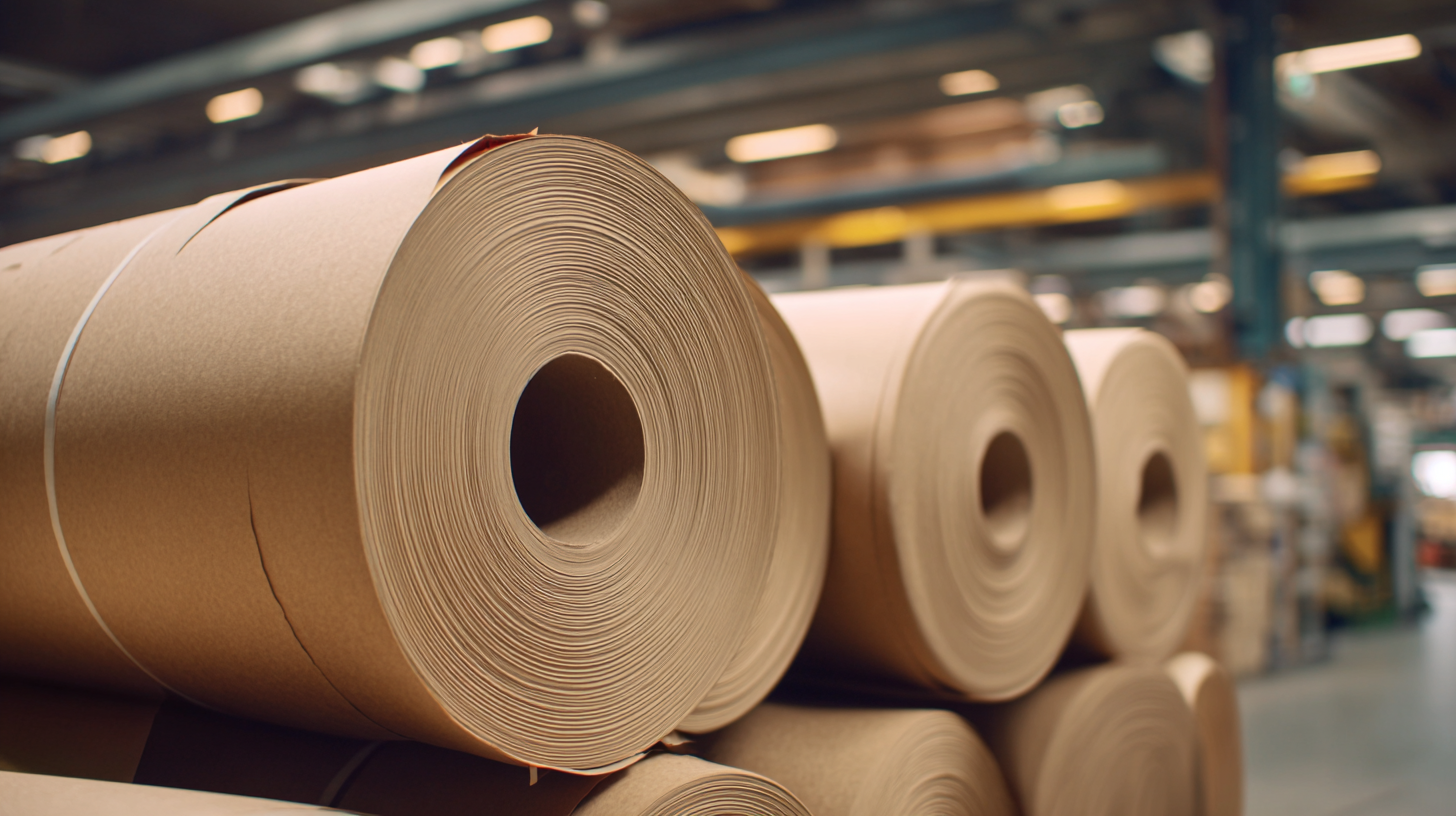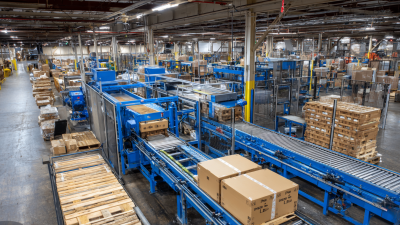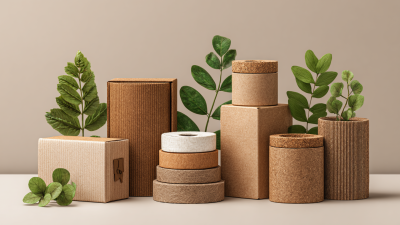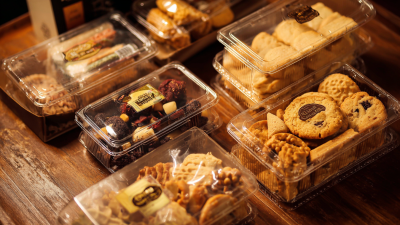Revolutionizing Sustainability: The Impact of Innovative Packaging Paper Solutions
The global packaging paper industry is witnessing a transformative shift towards sustainability, driven by innovative solutions that not only meet consumer demands but also significantly reduce environmental impact. According to a report by Smithers Pira, the demand for sustainable packaging is expected to rise, with the market for eco-friendly packaging projected to reach $400 billion by 2027. This surge is largely attributed to increasing awareness among consumers and companies about the environmental ramifications of packaging waste. Specifically, packaging paper stands out as a key player in this movement, offering recyclable and biodegradable materials that can effectively replace traditional plastic options. Moreover, advancements in technology have enabled manufacturers to produce packaging paper that not only meets functional and aesthetic requirements but also adheres to stringent sustainability criteria. This revolution in packaging paper not only supports companies in achieving their environmental goals but also aligns with the global effort to reduce carbon footprints, making it a pivotal element in the quest for a more sustainable future.

Innovative Materials: The Future of Sustainable Packaging Paper Solutions
Innovative materials are reshaping the landscape of sustainable packaging paper solutions. According to a report by Smithers Pira, the global market for sustainable packaging is projected to reach $700 billion by 2027, driven by consumer demand for eco-friendly alternatives. This growth is largely attributed to the introduction of bio-based and recycled materials that not only reduce landfill waste but also minimize the carbon footprint associated with traditional packaging solutions. Businesses adopting these innovative packaging options benefit from enhanced brand loyalty and compliance with increasingly stringent environmental regulations.
To further enhance sustainability efforts, companies can explore integrating advanced technologies such as digital printing and smart packaging solutions. For instance, a recent study revealed that companies employing digital printing experienced a 30% reduction in waste compared to those using conventional printing methods. This shift not only promotes sustainability but also allows for greater customization and creativity in packaging design.
Tips for businesses considering sustainable packaging solutions include conducting lifecycle assessments to understand the environmental impact of various materials, and collaborating with suppliers who prioritize sustainability in their production processes. Engaging with consumers about the benefits of eco-friendly packaging can also strengthen customer relationships and drive sales, making innovation not only environmentally responsible but also financially advantageous.
Revolutionizing Sustainability: The Impact of Innovative Packaging Paper Solutions
| Material Type | Recyclability (%) | Biodegradability (Years) | Carbon Footprint (kg CO2/ton) | Source |
|---|---|---|---|---|
| Recycled Paper | 90 | 2-5 | 250 | Post-consumer waste |
| Kraft Paper | 100 | 3-6 | 300 | Natural fibers |
| Mushroom Packaging | 100 | 30 | 50 | Fungi |
| PLA (Polylactic Acid) Paper | 90 | 1-2 | 300 | Corn starch |
| Sugarcane Bagasse | 100 | 60 | 175 | Sugar production waste |
Digital Technologies in Packaging: Enhancing Efficiency and Reducing Waste
The food packaging industry is at a critical juncture, facing environmental challenges propelled by the heavy reliance on plastics and a surge in consumer demand for convenience. Innovative digital technologies are emerging as pivotal solutions to enhance efficiency and minimize waste in the packaging sector. Through the integration of artificial intelligence, particularly in areas such as machine learning and predictive analysis, companies can optimize packaging processes, ensuring they are more sustainable while meeting market needs.
Incorporating tools like computer vision allows for better quality control and waste reduction by ensuring that packaging materials are used to their fullest potential, reducing the likelihood of defective products. Moreover, utilizing natural language processing can assist companies in understanding consumer feedback, thereby allowing for more targeted and sustainable packaging solutions. These advancements not only address immediate environmental concerns but also foster a shift towards sustainable business models in food packaging, ultimately contributing to a cleaner, greener future.
Revolutionizing Sustainability: Packaging Solutions Impact
Consumer Awareness and Preferences: Shaping the Packaging Industry's Green Shift
 Consumer awareness and preferences play a crucial role in shaping the packaging industry’s transition towards sustainability. With growing environmental concerns, consumers are becoming increasingly discerning about the products they purchase, including the materials used in packaging. This shift in consumer behavior encourages brands to adopt innovative packaging solutions that are not only functional but also environmentally friendly. As a result, companies are investing in sustainable materials and designs that minimize waste and reduce carbon footprints, resonating with the eco-conscious mindset of modern consumers.
Consumer awareness and preferences play a crucial role in shaping the packaging industry’s transition towards sustainability. With growing environmental concerns, consumers are becoming increasingly discerning about the products they purchase, including the materials used in packaging. This shift in consumer behavior encourages brands to adopt innovative packaging solutions that are not only functional but also environmentally friendly. As a result, companies are investing in sustainable materials and designs that minimize waste and reduce carbon footprints, resonating with the eco-conscious mindset of modern consumers.
Moreover, surveys indicate that a significant percentage of shoppers are willing to pay a premium for products that utilize sustainable packaging. This willingness underscores the changing landscape of consumer priorities, where ecological impact is often placed on par or even above price and convenience. As businesses respond to these preferences, they can differentiate themselves in a competitive market. The integration of sustainable packaging not only enhances a brand's image but also builds customer loyalty and trust, ultimately driving a larger green shift within the packaging industry.
Case Studies: Successful Implementation of Eco-Friendly Paper Packaging
Innovative packaging paper solutions
are transforming the sustainability landscape across various industries. Many companies are now embracing eco-friendly paper packaging as a viable alternative to traditional plastic packaging. Case studies of leading brands reveal that the shift not only reduces environmental impact but also resonates well with conscious consumers. For example, a well-known beverage company recently adopted biodegradable paper cartons, which resulted in a significant reduction in their carbon footprint while enhancing their brand image.
Tips for transitioning to eco-friendly packaging include starting with a thorough assessment of your current packaging materials and identifying areas where paper solutions can be implemented. Engaging with suppliers who specialize in sustainable packaging can provide valuable insights and support throughout the transition process. Additionally, consider piloting your new packaging with select products to gather customer feedback before a full-scale rollout.
Another inspiring example comes from a cosmetics company that switched to recycled paper tubes for their products. This move not only cut down on plastic waste but also appealed to their environmentally-conscious customer base. As more brands share their success stories, it becomes evident that innovative packaging solutions are paving the way for a sustainable future while meeting the growing demand for environmentally friendly products.
Collaboration Across Industries: Driving Sustainable Innovation in Packaging
Collaboration across industries is becoming a crucial element in driving sustainable innovation in packaging. As various sectors recognize the urgent need to minimize environmental impact, partnerships between packaging manufacturers, brands, and research institutions are essential. These collaborative efforts result in the development of innovative packaging paper solutions that not only reduce waste but also enhance recyclability and biodegradability. By sharing knowledge and resources, companies can create packaging that meets consumer demands while adhering to sustainable practices.

Moreover, the integration of technology and sustainability in packaging design is significantly enhanced through these collaborations. For instance, companies are exploring new biodegradable materials and smart packaging technologies that monitor product freshness. This approach not only improves the consumer experience but also contributes to reducing food waste. As industries come together to innovate, they can promote a circular economy, where packaging is designed for reuse or recycling, thereby reducing reliance on virgin materials. Through these synergistic partnerships, the packaging industry is poised to make meaningful strides toward a more sustainable future.
Related Posts
-

How to Optimize Your Packaging Line Efficiency with Case Erectors Using Industry Data
-

7 Best Practices to Optimize Your Usage of Corrugated Cardboard for Packing Solutions
-

How to Choose Sustainable Packaging Materials for Your Business Needs
-

How to Choose the Best Tape Machine for Your Box Packaging Needs
-

Innovative Trends in Cookie Packaging Highlighted at the 138th Canton Fair 2025
-

7 Secrets to Choosing the Best Pallet Shrink Wrap Machine for Your Business
